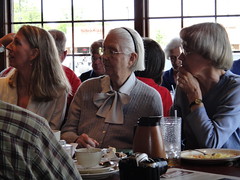My father told me about the circus elephant that escaped in Valdosta and ran as far north as Cat Creek, a few miles from where we live, going on 111 years ago. My great-aunt Evalyn told us more; she was 17 when it happened and about 97 when she told us where she was then living in Texas. It seems she got it mostly right, although it’s not clear exactly what the right story is.
Lowndes County Historical Society and Museum, undated, Gypsy the Elephant,
The story of Gypsy the elephant is one of Valdosta’s most bizarre and notable stories. In 1902 Gypsy, a large Asian elephant who belonged to the Harris-Nickle-Plate circus, killed her trainer, broke free, and went on a rampage in Valdosta before eventually being brought down north of town by the chief or police. At the time, the incident was so peculiar that people in surrounding towns accused the citizens of Valdosta of fabricating the entire story for publicity.
Our old family neighbor Albert Pendleton (from when we all lived on Varnedoe Street in Valdosta; way before my time), added: Continue reading



















